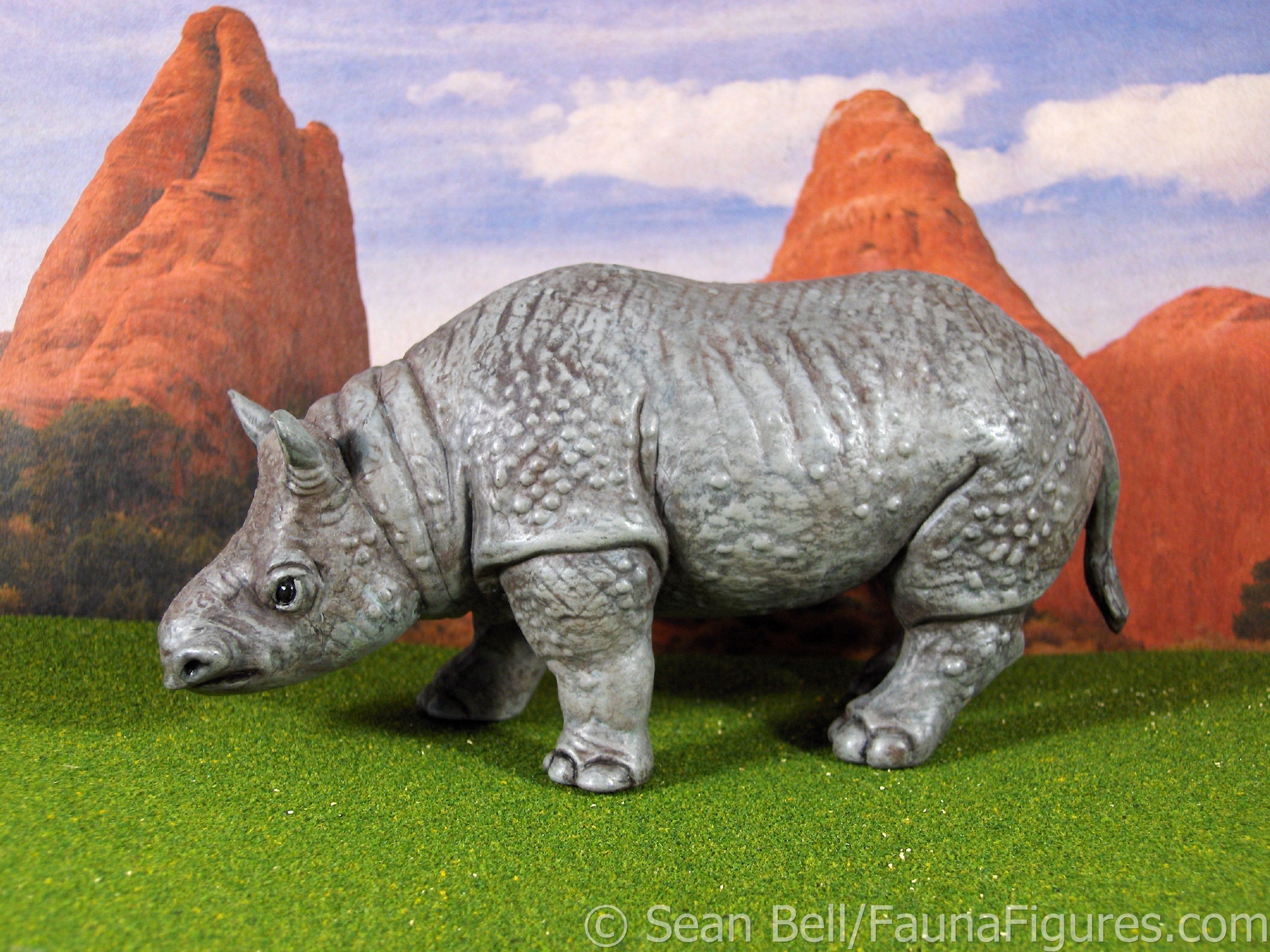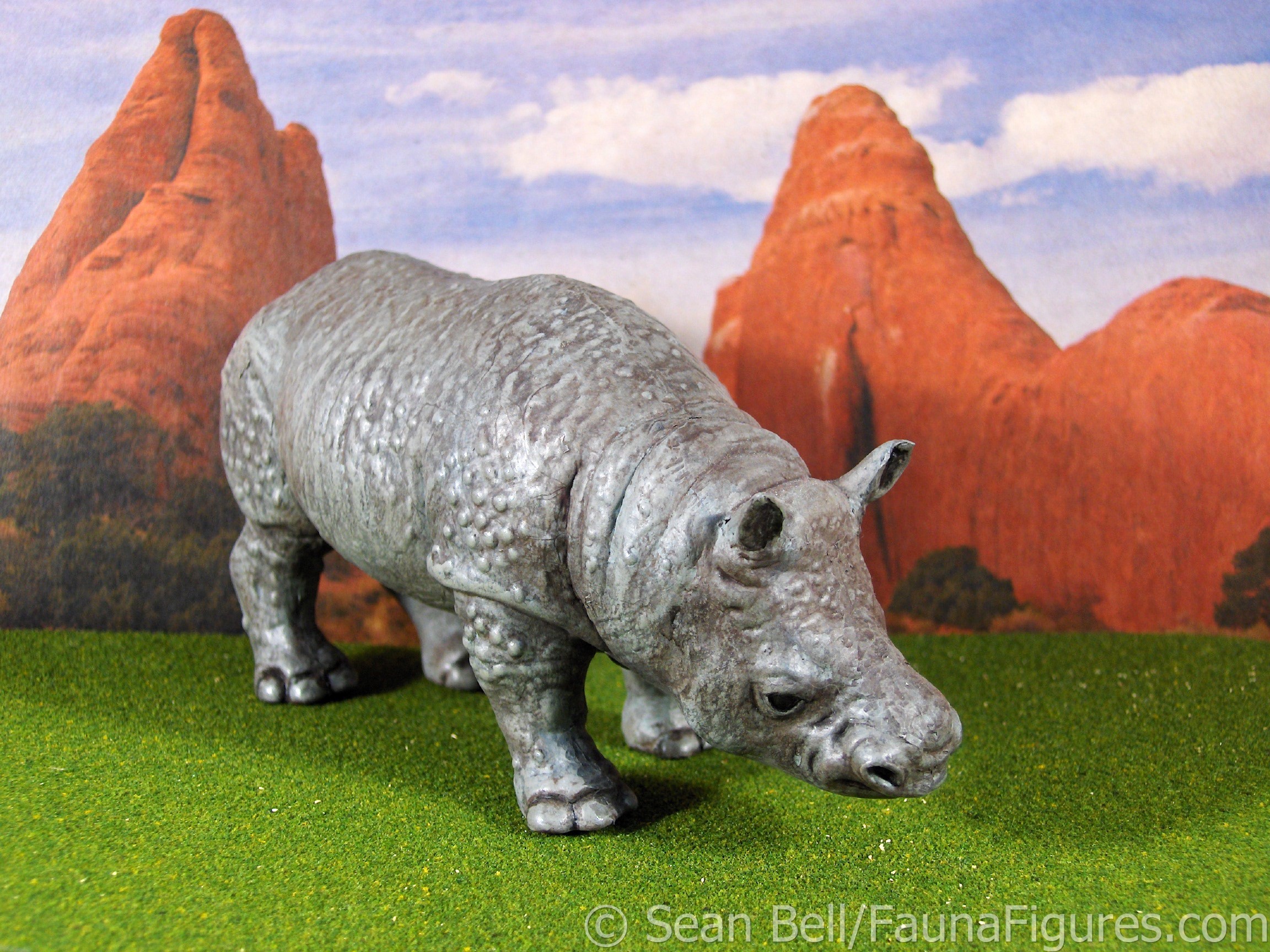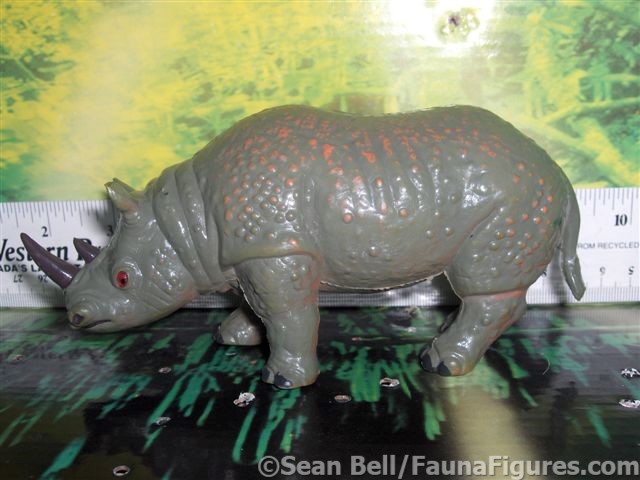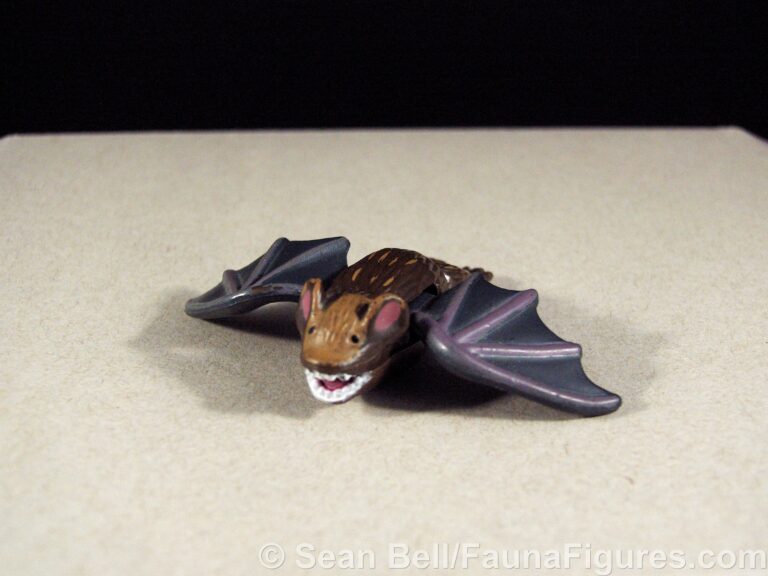Who makes it? This is a customized figure of Trigonia, based on the AAA White Rhino figure. A friend modified it into a much more interesting extinct animal!
When did it come out? I couldn’t even begin to guess. AAA has always felt like it was just always around (but probably the late 80s or early 90s). I picked it up in around 2007 or so.

Still available? Again, not sure. AAA is one of those companies that seems to see its models show up in different catalogs under different distributors. Plus, there are often recasts and knock offs that may or may not be official.
Where can it be found in my displays? Trigonias is proudly displayed on one of my prehistoric mammal shelves, the one with a lot of stranger and sometimes less ‘great’ but still good figures, Hemnes4Bβ

How does it fit in the collection? It’s a prehistoric mammal! I have lots of those, and so far it is my only hornless rhino (other than the wide variety of indricotheres). And it has a history that saw it on display in a museum for a while!
Any story behind it? There’s a great weird story with this one! I’ve mentioned before that I managed a dino museum place, and part of that included displays of course. We had an agreement with the Royal Saskatchewan Museum where we would display some of their interesting actual specimens (we were not that big a space), primarily skulls, small limbs, etc. But one thing that I found missing was reconstructions of these animals–if people are familiar with the named animal, that’s one thing, But if they aren’t then a fossil and a name don’t mean much. I could have used artwork (but with no budget, even licensing existing properties was going to be tough). And since I already had an extensive collection I decided to loan pieces of my collection to the museum displays (labelled and tagged, of course, so that I knew what belonged to me!)

I was able to find a figure that related to every display specimen (even a Leptomeryx! Sort of…another time maybe). Except for a hornless rhino skull. The genus of that one was Penetrigonias, and it turns out that there aren’t a lot of those models. In fact, we had a hard time even finding a reconstruction of the taxon. We knew it was smaller than Trigonias, and both were found in the area (different localities though). And while the former would probably have been more lightly built, the closest thing I would be able to provide was a heavier built rhino to represent some kind of hornless rhino, if someone could modify an existing model. The paleontology technician did some amazing scalpel and paint work, and we ended up with the figure I have now. It was great for helping people to visualize rhinos that never had horns, right in our backyards (plus or minus ~35 Million years). When I left, I of course took it (and the other models) with me!
Notable remarks about this figure (a review that isn’t really a review): Well, the legs are probably a little short for either the White Rhino or Trigonias but these models have never been great, more like good enough. As a representation of a hornless rhino, it works really well though, even if it might be a little heavier than it should be, and probably wouldn’t have had the heavy overlapping armour at the legs. But it really only worked because I had an award-winning model maker to make the needed adjustments!

Would I recommend it? Well, you probably can’t get the guy who did this to do yours; he’s not in the same place now either! But I have seen many people that are also very skilled with customizations that could probably make the necessary adjustments. It’s a little big compared to your average prehistoric mammal figure, which usually range around 1:20 to 1:30; this one would be around 1:15.
One word of caution, if you are inclined to adjust this or another AAA figure–the paint job required priming of course. And that primer, just a basic model primer, reacted really badly with the plastic–it off gassed for weeks before it stopped being sticky and having a weird smell. So keep that in mind!






